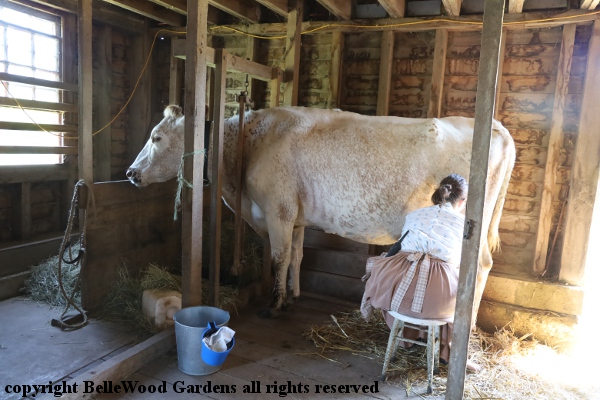
.
If you have any comments, observations, or questions about what you read here, remember you can always Contact Me
All content included on this site such as text, graphics and images is protected by U.S and international copyright law.
The compilation of all content on this site is the exclusive property of the site copyright holder.
Dairying at the Howell Living History Farm
Saturday, 4 June 2022
I'm off, for another fact and fun filled visit at Howell Living History Farm. Today's event has a focus on dairying. Visitors are invited to join farmer Katlyn, as she demonstrates handling and milking the farm cow, Blizzard. Learn about cow breeds, milk and cream production, and more. At the farmhouse, visitors of all ages can also help make cheese and butter.
Commercial dairies milk their cows twice a day. While their potential life span is 15 to 20 years or so, once their milk production drops they are sent to slaughter at around 5 or 6 years. There is Bobolink Dairy in Hunterdon County, New Jersey. They milk their cows once a day. The milk is used primarily for cheese making. And their cows are productive for 14 or 15 years. Less milk per milking but longer useful life. Howell Living History Farm also milks their farm cow once a day. The practicality here is for the staff, as milking twice a day, seven days a week, would be complicated. Once a day works well for both cow and farmhand.

This is Blizzard. She is an atypical American Lineback cow. Usually, they have a red or black coat with a streak of white along their back. Aptly named, Blizzard has an overall white coat with scattered light brown freckles and patches. She is 8 years old, and calved about 18 months ago.

Blizzard is usually milked at about 2:00 p.m. but today there will be two milkings, relatively close together, to allow more visitors have an opportunity to watch. You need strong hands to milk. It takes about 20 minutes, and especially towards the end Katlyn must be sure to strip out the last of the milk or mastitis can develop. Pushing / bumping the udder encourages the last milk to be let down, similar to how a calf head butts the udder while nursing.
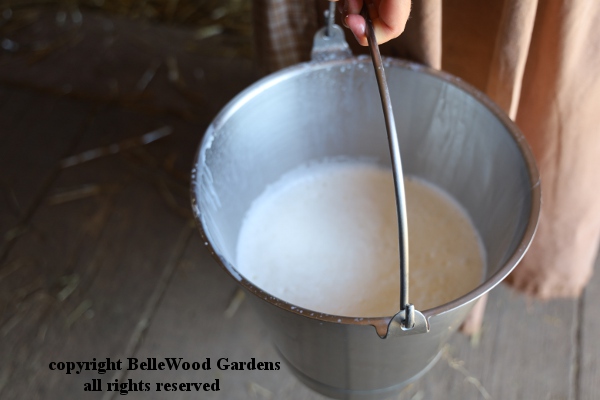
Each milking yields 2 to 2½ gallons of milk.
Now over to the farmhouse where Kim and a volunteer are demonstrating butter and cheese making. New Jersey does not allow the use of raw, unpasteurized milk. Butter was / will be made with store bought milk, and Blizzard's milk is pasturized for making cottage cheese. Butter is coagulated fat, so heavy cream is best though - with enough effort - even half & half will do.

Small helpers were all so eager to take a turn churning cream into butter
that I could not get an angle for an image! So here's one I took years ago,
of a winter kitchen event. It is a similar butter churn - jar, paddles, handle.

Kim, the kitchen maven, is spreading dabs of butter
on saltine crackers for visitors to sample. One each!
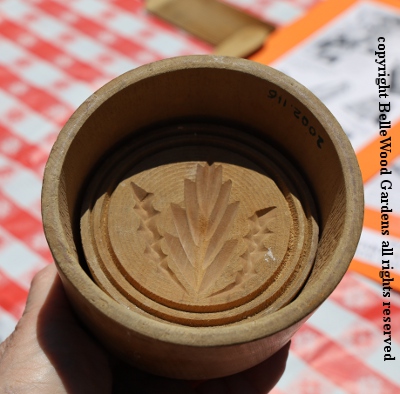
There is a display of treen, wooden ware, used with butter making.
Paddles to work the last of the whey from the butter, and molds
to give a decorative finish to the butter. No salt, so this is sweet.
Next is making cottage cheese, possibly the easiest kind of cheese to make.
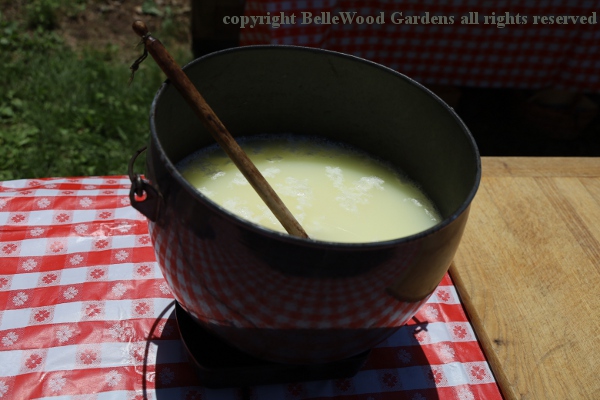
Basically, milk is heated. Some source of acid is added - vinegar or lemon juice.
Gently heated some more. Curds begin to form. Stir gently to prevent scorching.

Then, strain the whey from the curds. Since Kim used vinegar (free for the farm, as vinegar may be made from the cider, which was made from the farm's apples) she won't use it in cooking. Probably feed whey to the pigs - they will eat anything. Add some finely minced chives and a pinch of salt. And another farm fresh sample for visitors to taste.
Although many other female mammals have been used in dairying - horses, sheep, camels - the second most familiar after cows are goats. They are smaller than a cow, easy to keep. and the fact that their output is measured in quarts rather than gallons may be easier to cope with. Their milk is naturally homogenized, so difficult to churn into butter. And since goats have only two teats they are usually milked from the rear rather than the side, like cows which have four teats.
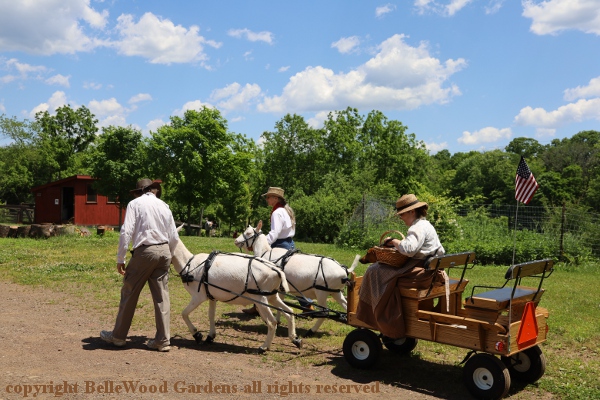 <\p>
<\p>
These two American saanen goats are a milking breed. Not that these two visitors to the farm have any such use, however. They are wethers, castrated bucks. Otherwise they are quite rambunctious. And at 200 pounds apiece not an animal you want to have any disputes with. They can easily pull twice their weight, 800 pounds for the pair, Jean tells me. Their harness is adapted from pony harness. And they are wearing little "go-goat" boots because there are sheep here on the farm. Their owners are cautious about potential for disease cross-contamination.
I've been to Howell Living History Farm many times, and always learn something and enjoy myself. Today was no different. Having presented Dairy 101 myself (though sans cow) it was delightful to watch from the opposite side of the room, audience rather than presenter.
Back to Top
Back to June
Back to the main Diary Page